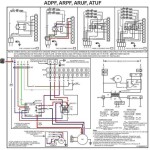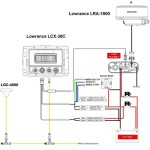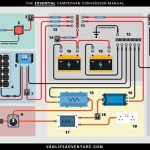A wiring diagram for a car audio capacitor graphically outlines the electrical connections between a capacitor and other components within a car’s audio system. Its purpose is to guide the proper installation of the capacitor to enhance the system’s performance and prevent potential damage.
The capacitor, acting as an energy reservoir, helps stabilize the voltage supply to power-hungry amplifiers, particularly during periods of high demand. By providing a buffer, it prevents voltage drops that can distort the audio signal and strain the amplifier. Wiring diagrams ensure that the capacitor is correctly connected to the amplifier, power source, and ground, optimizing its effectiveness.
Moving forward, this article will delve into the specific wiring techniques, component considerations, and advantages associated with incorporating a capacitor into a car audio system.
Understanding the different aspects of a wiring diagram for a car audio capacitor is crucial for ensuring proper installation and maximizing the performance of the audio system. As a noun, “wiring diagram” refers to a visual representation of the electrical connections, and its key aspects encompass various dimensions related to the capacitor’s integration within the system.
- Electrical Connections: The diagram outlines the precise connections between the capacitor, amplifier, power source, and ground, ensuring proper flow of current.
- Capacitor Placement: It specifies the optimal location for the capacitor, typically near the amplifier, to minimize voltage drop and enhance efficiency.
- Wire Gauge: The diagram indicates the appropriate wire gauge for the connections, considering the current draw of the system to prevent power loss.
- Grounding: The diagram ensures a proper grounding connection for the capacitor, crucial for safety and preventing electrical noise.
- Capacitor Value: The diagram specifies the recommended capacitance value for the capacitor, based on the electrical demands of the system.
- Amplifier Compatibility: The diagram takes into account the compatibility between the capacitor and the amplifier, ensuring they work seamlessly together.
- System Layout: The diagram provides a visual representation of the entire audio system layout, including the capacitor’s integration.
- Troubleshooting Guide: The diagram may include a troubleshooting guide to assist in diagnosing and resolving any issues related to the capacitor or its connections.
These aspects are interconnected and essential for a well-functioning car audio system. By understanding and following the wiring diagram precisely, installers can optimize the performance of the capacitor, ensuring a stable power supply, enhanced audio quality, and protection for the amplifier.
Electrical Connections
The electrical connections outlined in a wiring diagram for a car audio capacitor play a critical role in ensuring the proper functioning of the entire audio system. Without precise connections, the capacitor cannot effectively perform its in stabilizing the voltage supply and enhancing the system’s performance.
A key component of the wiring diagram is the specification of the connections between the capacitor and the amplifier. The amplifier draws power from the power source, and the capacitor acts as a buffer to prevent voltage drops that can distort the audio signal. By ensuring a proper connection between these components, the wiring diagram helps maintain a stable voltage supply, resulting in improved audio quality and protection for the amplifier.
Another important aspect of the electrical connections is the proper grounding of the capacitor. Grounding provides a reference point for the electrical system and helps prevent electrical noise and interference. The wiring diagram specifies the appropriate grounding point for the capacitor, ensuring that it is effectively connected to the vehicle’s chassis or other suitable grounding location.
Understanding the electrical connections outlined in a wiring diagram for a car audio capacitor is essential for installers and audio enthusiasts. By following the diagram precisely, they can ensure that the capacitor is properly integrated into the system, maximizing its effectiveness and enhancing the overall audio experience.
Capacitor Placement
Capacitor placement plays a crucial role in maximizing the effectiveness of a car audio capacitor. By specifying the optimal location for the capacitor, typically near the amplifier, the wiring diagram ensures that the capacitor can effectively perform its in stabilizing the voltage supply and enhancing the system’s performance.
- Proximity to Amplifier: The capacitor should be placed as close as possible to the amplifier to minimize the length of the power wires. This reduces resistance and voltage drop, ensuring that the capacitor can provide a quick and efficient response to voltage fluctuations.
- Grounding: The capacitor’s grounding point should also be located near the amplifier. This ensures that the capacitor has a good electrical connection to the vehicle’s chassis, which is essential for proper grounding and noise reduction.
- Wire Length: The wiring diagram specifies the appropriate length of the power wires connecting the capacitor to the amplifier and the power source. Using excessively long wires can increase resistance and reduce the capacitor’s effectiveness.
- Physical Constraints: The wiring diagram considers the physical constraints of the vehicle when specifying the capacitor’s location. It ensures that the capacitor is placed in a location where it will not interfere with other components or pose a safety hazard.
By following the guidelines outlined in the wiring diagram, installers can ensure that the capacitor is placed in the optimal location to minimize voltage drop and enhance the efficiency of the car audio system. This contributes to improved audio quality, reduced distortion, and increased amplifier lifespan.
Wire Gauge
In the context of “Wiring Diagram for Car Audio Capacitor”, determining the appropriate wire gauge is crucial as it directly impacts the system’s performance and safety. The diagram provides specific guidelines for selecting the correct wire gauge, considering factors such as the current draw of the system and the length of the wire runs.
- Current Carrying Capacity: The wire gauge must be able to handle the current draw of the audio system without overheating or causing excessive voltage drop. A thicker wire gauge indicates a lower resistance, allowing for better current flow.
- Voltage Drop: Thinner wire gauges have higher resistance, leading to voltage drop over the length of the wire. The diagram specifies the wire gauge that minimizes voltage drop, ensuring that the capacitor receives adequate voltage to effectively stabilize the power supply.
- Wire Length: The length of the wire run between the capacitor and the amplifier/power source also influences the wire gauge selection. Longer wire runs require a thicker wire gauge to compensate for the increased resistance.
- Safety: Using an undersized wire gauge can pose safety hazards. Overheating wires can damage insulation and potentially cause electrical fires. The diagram ensures that the wire gauge is appropriate for the system’s current draw, preventing such risks.
Proper wire gauge selection, as outlined in the wiring diagram, optimizes the performance of the car audio capacitor. It ensures efficient current flow, minimizes voltage drop, and enhances the stability of the power supply. By following these guidelines, installers can ensure a safe and high-performing audio system.
Grounding
Proper grounding is a critical aspect of any electrical system, including car audio systems. In the context of a “Wiring Diagram for Car Audio Capacitor,” grounding plays a vital role in ensuring the safe and effective operation of the capacitor. A properly grounded capacitor provides a stable reference point for the electrical circuit, preventing electrical noise and interference, and enhancing the overall performance of the audio system.
Without a proper grounding connection, the capacitor cannot effectively discharge stored electrical energy, leading to voltage spikes and instability in the power supply. This can result in distorted audio output, reduced amplifier efficiency, and potential damage to the capacitor itself. The wiring diagram provides detailed instructions on connecting the capacitor to a suitable grounding point, typically the vehicle’s chassis or a dedicated grounding terminal.
In real-life applications, proper grounding is essential for preventing electrical noise and interference, which can manifest as humming, buzzing, or crackling sounds in the audio system. By providing a low-resistance path for electrical current to flow, grounding helps eliminate unwanted noise and ensures a clean and clear audio signal.
Understanding the importance of grounding in a “Wiring Diagram for Car Audio Capacitor” is crucial for installers and audio enthusiasts alike. By following the diagram’s instructions and ensuring a proper grounding connection, they can optimize the performance of the capacitor, enhance the audio quality, and safeguard the electrical system from potential hazards.
Capacitor Value
In the context of “Wiring Diagram For Car Audio Capacitor”, the capacitor value plays a crucial role in determining the capacitor’s ability to effectively stabilize the voltage supply and enhance the audio system’s performance. The wiring diagram provides specific guidelines for selecting the appropriate capacitance value, considering factors such as the system’s power requirements, amplifier characteristics, and desired audio quality.
- System Power Requirements: The capacitance value should be proportionate to the power demands of the audio system. A higher power system requires a capacitor with a higher capacitance value to provide adequate energy storage.
- Amplifier Characteristics: The capacitor value should be compatible with the amplifier’s input impedance. A mismatch between the capacitor value and amplifier impedance can lead to reduced damping factor and potential instability.
- Desired Audio Quality: The capacitance value can influence the audio system’s frequency response and overall sound quality. A higher capacitance value can provide better low-frequency response but may compromise high-frequency clarity.
- Real-life Example: A typical car audio system with a power output of 500 watts RMS may require a capacitor with a capacitance value in the range of 1 to 2 Farads. This value provides sufficient energy storage to stabilize the voltage supply during periods of high power demand, preventing voltage drops and ensuring a clean and undistorted audio output.
Choosing the correct capacitor value is essential for optimizing the performance of a car audio capacitor. By following the guidelines outlined in the wiring diagram and considering the specific electrical demands of the system, installers can ensure that the capacitor is properly sized and configured to deliver maximum benefits to the audio system.
Amplifier Compatibility
In the context of “Wiring Diagram For Car Audio Capacitor,” amplifier compatibility plays a critical role in ensuring the optimal performance and stability of the audio system. The wiring diagram provides specific guidelines for matching the capacitor with a compatible amplifier, considering factors such as input impedance, power handling capabilities, and electrical characteristics.
Input impedance matching is crucial to prevent excessive voltage drop and distortion in the audio signal. The capacitor’s capacitance value and the amplifier’s input impedance must be compatible to ensure proper damping factor and signal transfer. A mismatch can lead to reduced audio quality, inefficient power delivery, and potential damage to the amplifier.
Real-life examples highlight the importance of amplifier compatibility in car audio systems. For instance, a high-power amplifier with low input impedance requires a capacitor with a higher capacitance value to maintain a stable voltage supply. Conversely, a low-power amplifier with high input impedance may not require a capacitor with as high a capacitance value.
Understanding the relationship between amplifier compatibility and wiring diagrams is essential for installers and audio enthusiasts alike. By carefully considering the electrical characteristics of both the capacitor and the amplifier, they can ensure that the system is properly configured for maximum performance and longevity.
System Layout
In the context of “Wiring Diagram for Car Audio Capacitor,” understanding the system layout is essential for effective installation and optimizing the audio system’s performance. The wiring diagram not only provides a roadmap for connecting the capacitor but also offers a comprehensive view of how the capacitor integrates within the entire audio system.
- Component Identification: The diagram clearly identifies all the components of the audio system, including the head unit, amplifier, speakers, and the capacitor. This helps installers visualize the system’s architecture and plan the installation accordingly.
- Signal Flow: The wiring diagram illustrates the signal flow throughout the system, showing how audio signals are routed from the head unit to the amplifier, and eventually to the speakers. Understanding the signal flow helps in troubleshooting issues and optimizing the system’s performance.
- Power Distribution: The diagram outlines the power distribution network, indicating how power flows from the battery to the amplifier and other components. This information is crucial for selecting the appropriate wiring gauge and ensuring proper power delivery.
- Grounding: The wiring diagram specifies the grounding points for all the components, including the capacitor. Proper grounding is essential for system stability, noise reduction, and safety.
Comprehending the system layout as depicted in the wiring diagram empowers installers with the knowledge to make informed decisions during installation. By visualizing the system as a whole and understanding the interconnections between its components, they can ensure a well-integrated and high-performing audio system.
Troubleshooting Guide
Within the context of “Wiring Diagram For Car Audio Capacitor”, a troubleshooting guide, if included, serves as a valuable tool for installers and audio enthusiasts alike. It provides a structured approach to diagnosing and resolving issues related to the capacitor or its connections, ensuring optimal system performance and longevity.
- Problem Identification: The troubleshooting guide helps identify potential issues with the capacitor or its connections by providing a list of common symptoms and their possible causes. This assists in narrowing down the source of the problem, saving time and effort.
- Step-by-Step Instructions: The guide offers step-by-step instructions on how to troubleshoot and resolve the identified issues. These instructions are typically clear and concise, guiding the user through the process of checking connections, testing components, and resolving any faults.
- Real-Life Examples: The troubleshooting guide may include real-life examples of common capacitor-related issues and their solutions. These examples provide practical insights into potential problems and how to address them effectively.
- Safety Considerations: The guide emphasizes safety considerations when troubleshooting the capacitor or its connections. It provides instructions on how to safely discharge the capacitor, handle electrical components, and avoid potential hazards.
By incorporating a troubleshooting guide in the wiring diagram for a car audio capacitor, installers gain access to valuable information and support. It empowers them to diagnose and resolve issues quickly and efficiently, ensuring a smooth and enjoyable audio experience.










Related Posts








